


|
|
|
|||||||||||||||
|
|
||||||||||||||||
|
|
|||||||
|
|
Atlanta Cyclorama 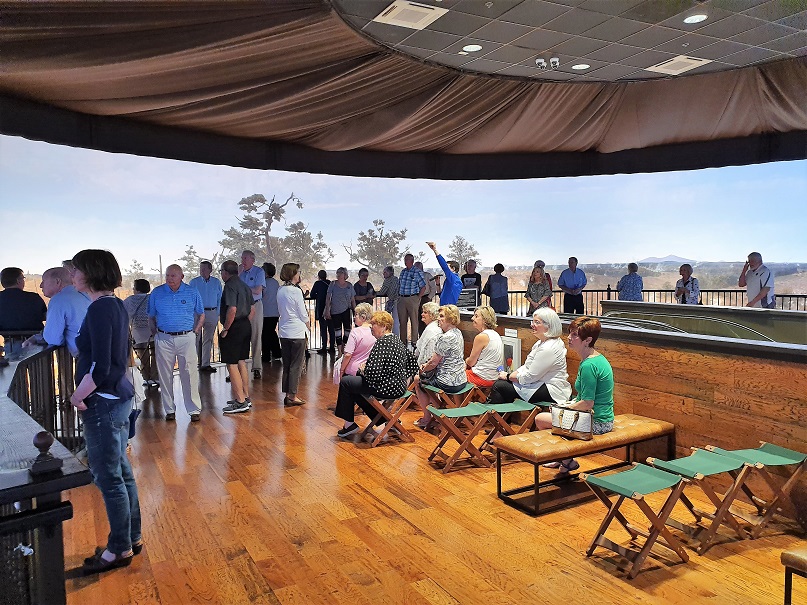
A cyclorama is a large painting that completely circles a raised platform where viewers stand. This creates the illusion that the viewer is part of the scene. Artificial scenery in a diorama extends down from the painting giving it a three-dimensional effect. The first cyclorama was produced in London by Robert Barker in 1787 and within 20 years there were ones in Paris and New York depicting scene of cities and landscapes. This later developed into showing natural disaster, Biblical subjects and battle scenes. By the 1880’s, cyclorama paintings were made in a standard size, as were the buildings to house them, and they were being exhibited from one city to another. At there peak of popularity more than 40 were on tour in the United States, mainly in the Northern cities, and were a form of entertainment in the late 19th century that provided a visual story through a 360-degree painting. By the 1890 their popularity had waned and nearly all were discarded and destroyed. Today only two remain, the Battle of Gettysburg and the Battle of Atlanta in the Atlanta History Centre. The painting is a circular hand painted canvas standing 49 feet high and depicts the Battle which occurred on 22 July 1864. Beginning around noon the Battle of Atlanta continued until nightfall with the two armies clashing on the eastern outskirts of the city. The cyclorama shows the battle with the different sections depicting the ebb and flow of the battle. Since its creation in 1886 the painting has been retouched and restored many times. In 1893 and then again in 1898 a section was damaged by a roof collapse which was subsequently repaired. It also required touching up due to discolouration from water stains in 1009 and then again in 1921. The cycloramas were originally meant to have a diorama of artificial terrain in the foreground, although these did not include figures as that may have detracted from the paintings. During the restoration of 1934-1936 128 soldiers were created to obscure the line between the painting and the diorama. A number of body parts were created in plaster and these were mixed and matched to produce different poses. They were also made in different sizes ranging between 18 and 42 inches in order to create the illusion of distance. Originally real dirt was used but this was replaced by fibreglass in the 1972-1982 restoration to reduce the risk of pests. Between 1972 – 1982 a project of restoration was undertaken to replace some of the sections that had been lost over the years. It also was to allow access to the rear of the painting without having to remove it was carried out. This also enabled a fibreglass backing to be applied to reinforce the canvas. During the period of 2015-2019 the Atlanta History Centre raised $36 million to relocate and restore it and in 2017 the painting is moved to a new 23,000 square foot cyclorama building to form the centre piece to the what is the complex of the Atlanta History Centre. During a visit, visitors are shown as film explaining the history of the painting and the battle itself. The film is projected onto the painting so has the effect of immersing viewers in the events. It also explains the history of the painting and how it was modified to show the battle as a confederate victory before reverting to the actual events. 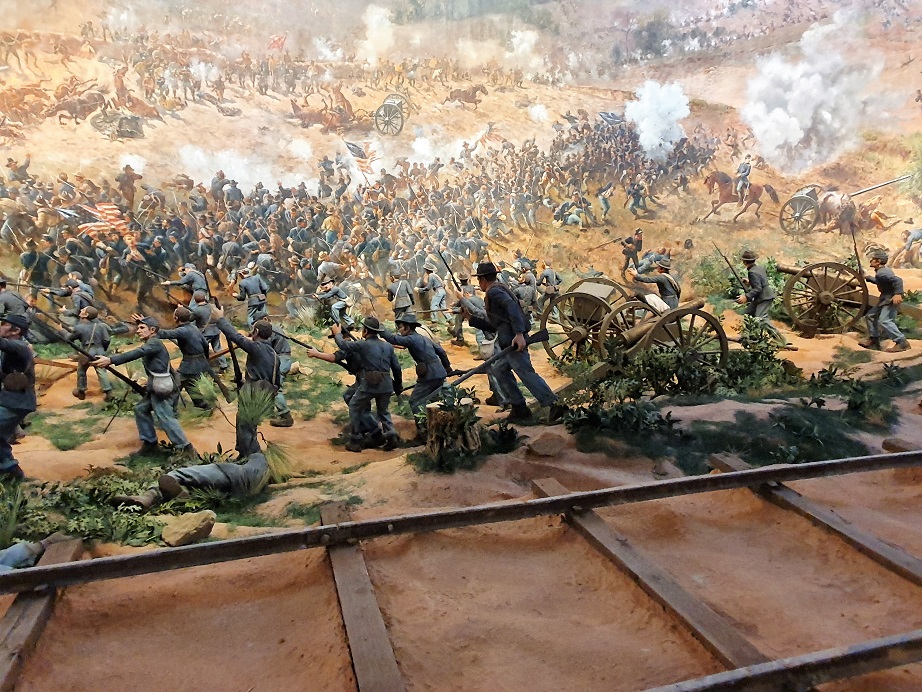 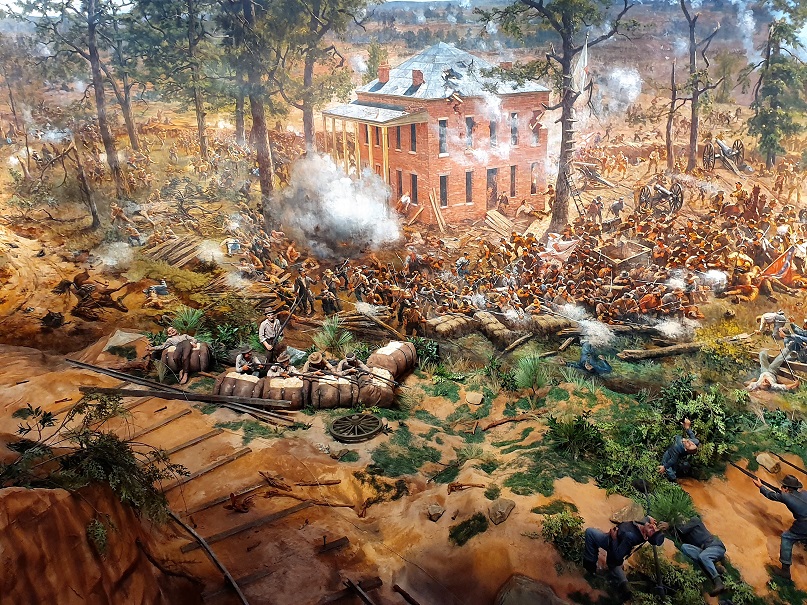
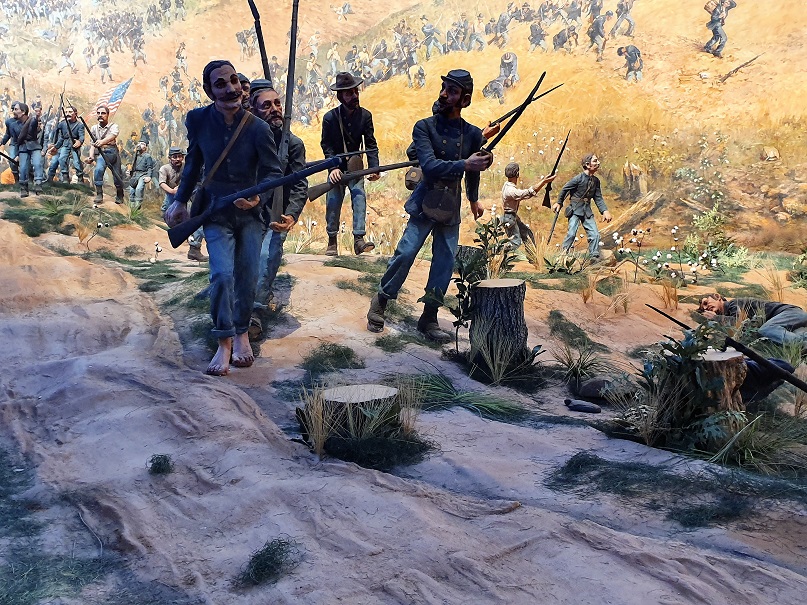 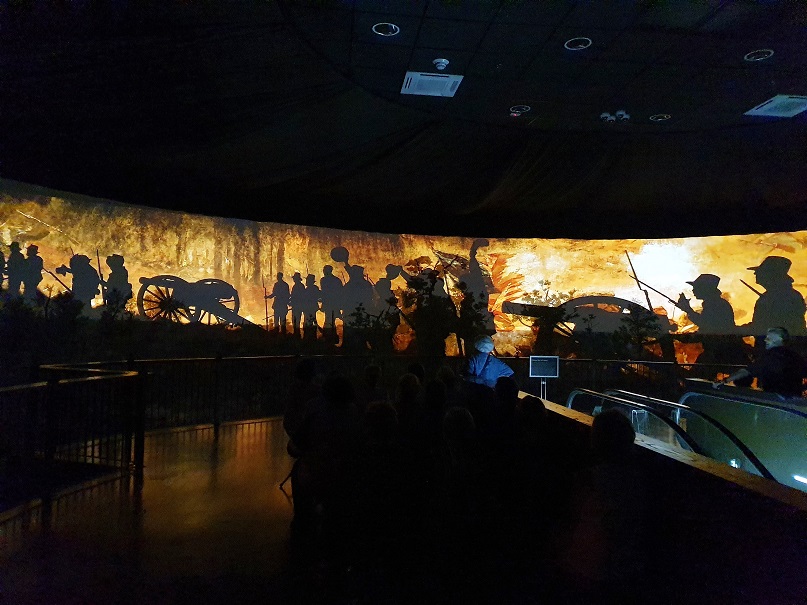
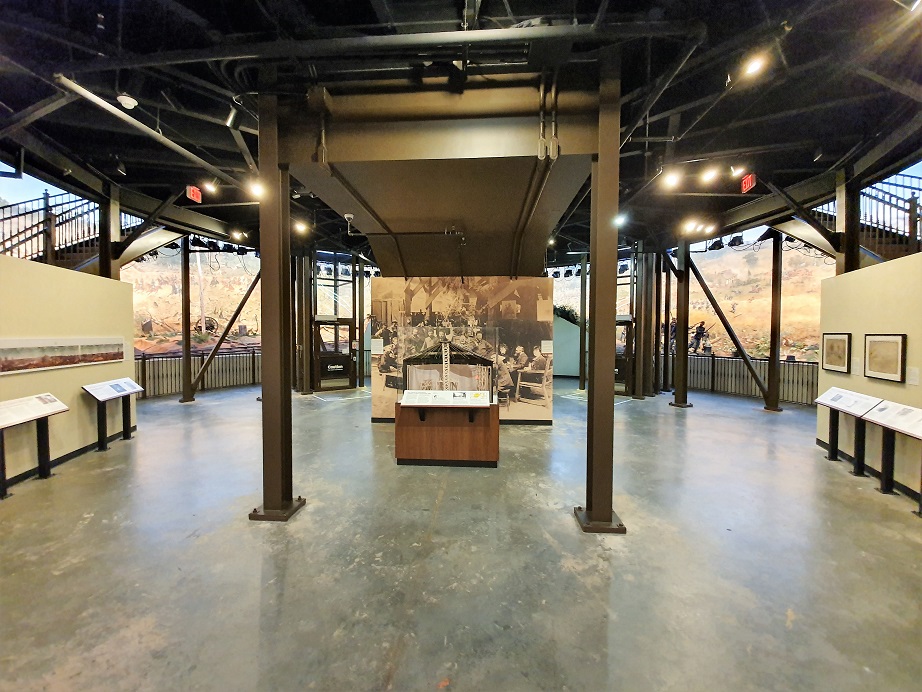
|
|
|||||
|
|
|||||||
All Photographs were taken by and are copyright of Ron Gatepain
| Site Map |